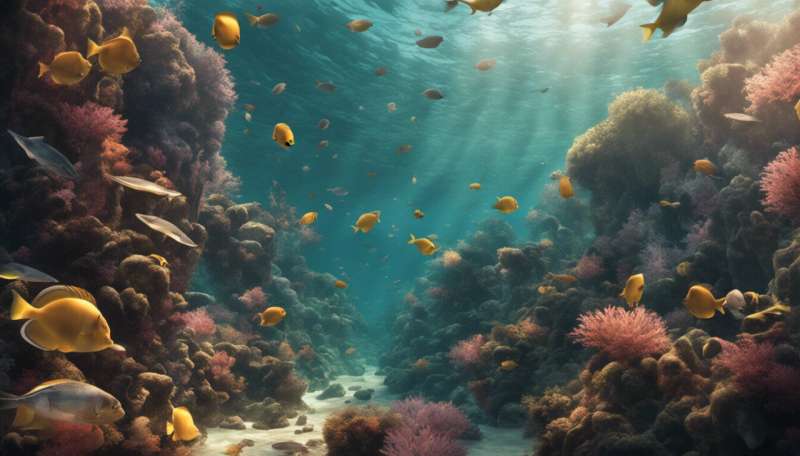Engineer explores underwater wireless communications

(�鶹��ԺOrg.com) -- Milica Stojanovic says the best way to think about the need for better underwater communications is to consider the Titanic.
After the passenger liner sank in April 1912, its exact whereabouts remained a mystery until 1985, when the Woods Hole Oceanographic Institution’s imaging vehicle finally located the wreckage.
When the robotic vehicle honed in on the craft, its success underscored a greater need for better underwater communications, especially those that would require no cables. Wireless communications, signal processing and detection underwater are the areas of specialty for Stojanovic, a newly hired electrical engineering associate professor at Northeastern.
“When the Titanic sank, people knew approximately where it went down, but it wasn’t until Woods Hole designed that small robotic vehicle that we knew the truth,” Stojanovic said. “When that robot was sent down, it was attached to a long cable connecting it to a surface ship. The cables are very expensive and heavy, and they limit the movement of the robot. There are applications that would greatly benefit from the ability to communicate underwater without cables.”
Future applications could enhance myriad industries, ranging from the offshore oil industry to aquaculture to fishing industries, she noted. Additionally, pollution control, climate recording, ocean monitoring (for prediction of natural disturbances) and detection of objects on the ocean floor are other areas that could benefit from enhanced underwater communications.
“Oceans cover about 70 percent of the Earth’s surface, and much of this vast resource remains to be explored,” Stojanovic said. Unlike above-water communications developments, which have brought us instantaneous cell phone conversations, wireless Internet and myriad other advances, underwater communications lags behind.
Her research focuses on finding better ways of transmitting acoustical signals in hopes of improving capacity to the point where underwater robots no longer have to be chained by a heavy, expensive communications cable, but can instead transmit their readings to other robots, or to shipboard researchers.
“There is a need to improve the wireless communication capacity of underwater robots. Just think about the dangers of landmines. We also have underwater mines. We need robots that can find and neutralize the mines beneath the water” without endangering humans, she said. “These robots need to be able to talk to each other if they are going to perform their task efficiently.”
Yet, water puts a damper on communication capacity, slowing down the signal propagation and creating background noise and echoes—all problems she trains her analytical mind toward solving. Among other research areas, Stojanovic focuses her energies on creating clearer signals through “equalization” to solve the echo problem.
Further research interests take her into creation of underwater networks. For underwater instruments to communicate underwater, they must mimic the communication networks on land. Yet, the slow speed at which signals travel would turn an underwater conversation into garble, she said. “If multiple people talk at the same time, their signals will collide,” she said. “We need protocols that will orchestrate multiple conversations.”
Stojanovic, who received her master’s and doctorate degrees in electrical engineering from Northeastern, began her research focus while working as a postdoctoral fellow at the Woods Hole Oceanographic Institution. She jokes that she “never surfaced” from her earliest underwater communications work.
Growing up in Serbia, she received her undergraduate degree at the University of Belgrade, and also met her future husband. Together, she and Zoran Zvonar came to Northeastern to study electrical engineering.
Prior to joining the faculty, where her courses include undergraduate communications systems and linear systems, she was a principal scientist at the MIT Sea Grant College and the MIT Department of Aeronautics and Astronautics.
She has produced numerous published works, and most recently was a guest editor for “IEEE Communications Magazine,” for the feature story “Underwater Wireless Communication and Networks,” 2009.
Reflecting on her career in undersea communications, Stojanovic said the passion found her. “I’m not sure we ever decide what we want to be,” she said. “Things just happen that way.”
Provided by Northeastern University ( : )

















